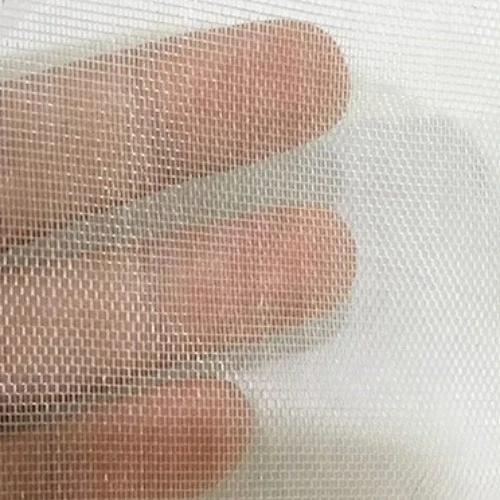-
 Afrikaans
Afrikaans -
 Albanian
Albanian -
 Amharic
Amharic -
 Arabic
Arabic -
 Armenian
Armenian -
 Azerbaijani
Azerbaijani -
 Basque
Basque -
 Belarusian
Belarusian -
 Bengali
Bengali -
 Bosnian
Bosnian -
 Bulgarian
Bulgarian -
 Catalan
Catalan -
 Cebuano
Cebuano -
 China
China -
 Corsican
Corsican -
 Croatian
Croatian -
 Czech
Czech -
 Danish
Danish -
 Dutch
Dutch -
 English
English -
 Esperanto
Esperanto -
 Estonian
Estonian -
 Finnish
Finnish -
 French
French -
 Frisian
Frisian -
 Galician
Galician -
 Georgian
Georgian -
 German
German -
 Greek
Greek -
 Gujarati
Gujarati -
 Haitian Creole
Haitian Creole -
 hausa
hausa -
 hawaiian
hawaiian -
 Hebrew
Hebrew -
 Hindi
Hindi -
 Miao
Miao -
 Hungarian
Hungarian -
 Icelandic
Icelandic -
 igbo
igbo -
 Indonesian
Indonesian -
 irish
irish -
 Italian
Italian -
 Japanese
Japanese -
 Javanese
Javanese -
 Kannada
Kannada -
 kazakh
kazakh -
 Khmer
Khmer -
 Rwandese
Rwandese -
 Korean
Korean -
 Kurdish
Kurdish -
 Kyrgyz
Kyrgyz -
 Lao
Lao -
 Latin
Latin -
 Latvian
Latvian -
 Lithuanian
Lithuanian -
 Luxembourgish
Luxembourgish -
 Macedonian
Macedonian -
 Malgashi
Malgashi -
 Malay
Malay -
 Malayalam
Malayalam -
 Maltese
Maltese -
 Maori
Maori -
 Marathi
Marathi -
 Mongolian
Mongolian -
 Myanmar
Myanmar -
 Nepali
Nepali -
 Norwegian
Norwegian -
 Norwegian
Norwegian -
 Occitan
Occitan -
 Pashto
Pashto -
 Persian
Persian -
 Polish
Polish -
 Portuguese
Portuguese -
 Punjabi
Punjabi -
 Romanian
Romanian -
 Russian
Russian -
 Samoan
Samoan -
 Scottish Gaelic
Scottish Gaelic -
 Serbian
Serbian -
 Sesotho
Sesotho -
 Shona
Shona -
 Sindhi
Sindhi -
 Sinhala
Sinhala -
 Slovak
Slovak -
 Slovenian
Slovenian -
 Somali
Somali -
 Spanish
Spanish -
 Sundanese
Sundanese -
 Swahili
Swahili -
 Swedish
Swedish -
 Tagalog
Tagalog -
 Tajik
Tajik -
 Tamil
Tamil -
 Tatar
Tatar -
 Telugu
Telugu -
 Thai
Thai -
 Turkish
Turkish -
 Turkmen
Turkmen -
 Ukrainian
Ukrainian -
 Urdu
Urdu -
 Uighur
Uighur -
 Uzbek
Uzbek -
 Vietnamese
Vietnamese -
 Welsh
Welsh -
 Bantu
Bantu -
 Yiddish
Yiddish -
 Yoruba
Yoruba -
 Zulu
Zulu
Collecting Insects with a Sweeping Net for Ecological Studies and Research
The Importance of Sweeping Nets in Insect Research
In the field of entomology, the study of insects is crucial for understanding biodiversity, ecosystem functions, and the impact of environmental changes. One essential tool that entomologists use for sampling insect populations is the sweeping net. This simple yet effective device has become a cornerstone of field research, allowing scientists to collect and study various insect species in their natural habitats.
A sweeping net, typically made from a sturdy handle and a fine mesh bag, is designed to capture insects flying above vegetation. The technique involves sweeping the net through shrubs, grasses, and other plants, which dislodges insects that are then captured in the bag. This method is particularly useful for sampling insects in diverse environments, such as grasslands, forests, and wetlands, and it is effective in capturing a wide range of taxa, including butterflies, beetles, and various flying insects.
The Importance of Sweeping Nets in Insect Research
Moreover, sweeping nets are non-destructive tools. They allow researchers to collect live specimens without harming them, which is crucial for conservation efforts. Many insects play vital roles in their ecosystems as pollinators, decomposers, and a food source for other animals. By using sweeping nets, researchers can gather data for their studies while allowing the insects to return to their natural environments unharmed, thus promoting the preservation of biodiversity.
sweeping net insect

In addition to facilitating the collection of specimens, sweeping nets provide a practical approach to monitoring changes in insect populations over time. Longitudinal studies that assess the impacts of climate change, habitat destruction, and pollution on insect communities benefit from the consistent methodology that sweeping nets offer. By using this tool repeatedly in the same locations, researchers can gather comparable data that reveal trends in insect diversity and abundance.
Furthermore, the information collected through the use of sweeping nets can help inform broader ecological studies. For instance, the presence and abundance of specific insect species can serve as indicators of ecosystem health. Changes in insect populations may reflect underlying environmental issues such as habitat degradation or shifts in climate patterns. Consequently, researchers can use data gathered with sweeping nets to propose conservation strategies or to advocate for sustainable practices that protect ecosystems.
However, it is important to note that while sweeping nets are valuable for capturing a variety of insects, they are not without limitations. Certain insects, especially those that are less active or dwell deep within foliage, may evade capture using this method. Therefore, researchers often complement sweeping nets with other sampling techniques, such as pitfall traps, light traps, or baiting methods, to ensure a comprehensive assessment of insect diversity.
In conclusion, the use of sweeping nets is an indispensable practice in insect research. This simple tool enhances the efficiency and effectiveness of field studies, promotes non-destructive sampling, and aids in the monitoring of ecological changes. As researchers continue to explore the complex relationships between insects and their environments, sweeping nets will undoubtedly remain a fundamental component of their toolkit, offering insights that are essential for conserving the rich tapestry of life on Earth.
-
Shipping Plastic Bags for Every NeedNewsJul.24,2025
-
Safety Netting: Your Shield in ConstructionNewsJul.24,2025
-
Plastic Mesh Netting for Everyday UseNewsJul.24,2025
-
Nylon Netting for Every UseNewsJul.24,2025
-
Mesh Breeder Box for Fish TanksNewsJul.24,2025
-
Expanded Steel Mesh Offers Durable VersatilityNewsJul.24,2025











